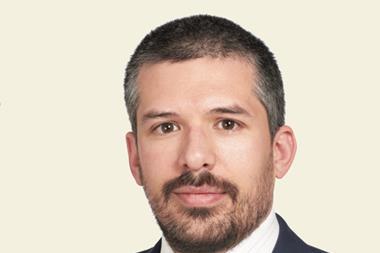Charles Prideaux, head of institutional business for the EMEA region at BlackRock, outlines three possible scenarios for the global economy.
Rarely have investors faced such a high and prolonged level of uncertainty. The endless turns and twists of the euro-zone crisis, the lacklustre nature of the US recovery and the high level of opacity surrounding the future direction of the Chinese economy make it hard for even the most experienced investors to determine an appropriate course of action. Earlier this year, the BlackRock Investment Institute, which brings together portfolio managers from across asset classes and regions, sought to address that challenge by identifying a number of likely investment scenarios and ranking them on a probability basis.
The resulting framework assigned the highest probability to a scenario of divergence between faster-growing emerging markets and the debt-ridden developed world. Within developed economies, the anticipated decoupling would see the US and, to a lesser extent, Japan muddle through, with Europe experiencing a shallow recession.
Ominously, however, the second most likely outcome was the so-called nemesis scenario - named after the Greek Goddess who wreaks havoc and vengeance - of a deep global recession, reflecting the significant risks posed by the European debt crisis. The third most probable scenario, dubbed stagnation, was one of faltering global growth and near recessionary conditions in much of the developed world.
Back to stagnation
Now that we have entered the second half of 2012, it is an opportune moment to revisit those scenarios and their investment implications. New analysis from the Institute shows that, while divergence was indeed the dominant scenario during the first quarter of this year, it has largely been supplanted by stagnation during the second quarter. This disappointing turnaround was the result of ineffective policy moves to stem the European debt crisis and worsening global economic data.
Looking ahead, continued deleveraging in the developed world and the euro-zone in particular, coupled with scepticism over policymakers' responses, have increased the likelihood that stagnation will prevail for the remainder of the year. This, in turn, means at best anaemic growth in the developed world and bouts of risk-on/risk-off market gyrations, with assets and markets moving in lockstep.
While divergence has taken a backseat, the expectation is that the US will continue to outperform Europe, and that China and other emerging markets will use interest rate cuts and fiscal measures to underpin their higher growth levels.
On the positive side, the nemesis scenario of a deep global recession has declined somewhat as the spectre of a disorderly euro-zone collapse appears to be fading. Nevertheless, it remains uncomfortably high. What's more, investors now also have to worry about US lawmakers' ability to avert the so-called fiscal cliff. If unresolved, the expiry of fiscal measures and automatic budget cuts could shave off as much as 4% of the country's GDP.
How do you meet your outcomes?
So what actions can investors take? The answer is complex. Stagnation and the associated risk-on/risk-off markets require a defensive approach, but investors should also be mindful of the dangers associated with the generalised flight to 'safety'. Since the start of the crisis, it has become abundantly clear there is no such a thing as a risk-free asset. Yet, with the number of government bond issuers that are perceived as safe by the market dwindling rapidly, the price of investing in the remaining 'safe haven' government bonds has continued to ratchet up. In many instances, investors now have to accept negative real yields but also significant volatility and record levels of duration risk. The latter could be particularly painful in the event of an unexpected yield reversal. By way of example, recouping the price losses associated with a 1% yield rise in 30-year US treasuries would take 5.8 years.
For institutional investors having the right liability -hedging framework in place has proven particularly beneficial over the last few years. However, today it clearly pays to implement any hedging policy in a dynamic and market-aware manner. From a return perspective, dealing with stagnation demands targeted risk management and an ability to implement asset allocation nimbly and efficiently across a wide opportunity set. This means, for instance, loosening the constraints of your bond portfolio, or selecting high-quality alternatives that can provide higher returns with a low correlation to traditional mainstream assets. Across the portfolio, but particularly in deflation-prone developed markets, we also suggest an explicit focus on quality and steady cash flows. High-quality global equities that combine strong and sustainable dividend streams with relatively low volatility appear particularly appealing from this perspective.
Charles Prideaux is head of institutional business for the EMEA region at BlackRock












No comments yet